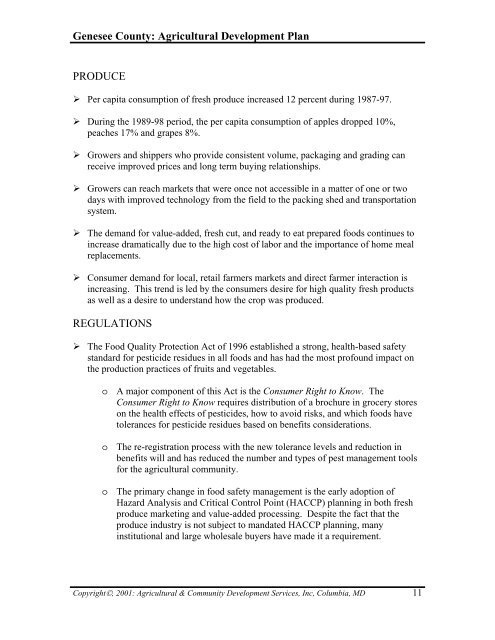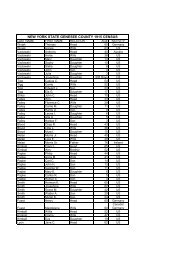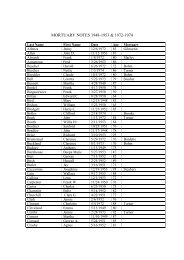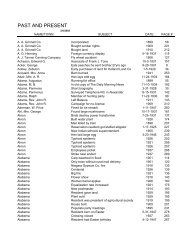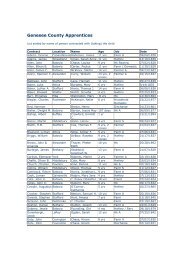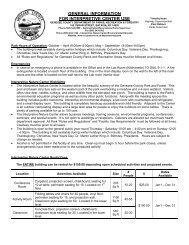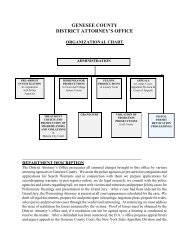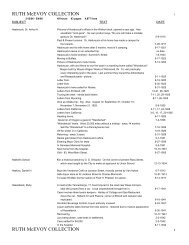Genesee County Agricultural and Farmland Protection Plan
Genesee County Agricultural and Farmland Protection Plan
Genesee County Agricultural and Farmland Protection Plan
You also want an ePaper? Increase the reach of your titles
YUMPU automatically turns print PDFs into web optimized ePapers that Google loves.
<strong>Genesee</strong> <strong>County</strong>: <strong>Agricultural</strong> Development <strong>Plan</strong><br />
PRODUCE<br />
‣ Per capita consumption of fresh produce increased 12 percent during 1987-97.<br />
‣ During the 1989-98 period, the per capita consumption of apples dropped 10%,<br />
peaches 17% <strong>and</strong> grapes 8%.<br />
‣ Growers <strong>and</strong> shippers who provide consistent volume, packaging <strong>and</strong> grading can<br />
receive improved prices <strong>and</strong> long term buying relationships.<br />
‣ Growers can reach markets that were once not accessible in a matter of one or two<br />
days with improved technology from the field to the packing shed <strong>and</strong> transportation<br />
system.<br />
‣ The dem<strong>and</strong> for value-added, fresh cut, <strong>and</strong> ready to eat prepared foods continues to<br />
increase dramatically due to the high cost of labor <strong>and</strong> the importance of home meal<br />
replacements.<br />
‣ Consumer dem<strong>and</strong> for local, retail farmers markets <strong>and</strong> direct farmer interaction is<br />
increasing. This trend is led by the consumers desire for high quality fresh products<br />
as well as a desire to underst<strong>and</strong> how the crop was produced.<br />
REGULATIONS<br />
‣ The Food Quality <strong>Protection</strong> Act of 1996 established a strong, health-based safety<br />
st<strong>and</strong>ard for pesticide residues in all foods <strong>and</strong> has had the most profound impact on<br />
the production practices of fruits <strong>and</strong> vegetables.<br />
o A major component of this Act is the Consumer Right to Know. The<br />
Consumer Right to Know requires distribution of a brochure in grocery stores<br />
on the health effects of pesticides, how to avoid risks, <strong>and</strong> which foods have<br />
tolerances for pesticide residues based on benefits considerations.<br />
o The re-registration process with the new tolerance levels <strong>and</strong> reduction in<br />
benefits will <strong>and</strong> has reduced the number <strong>and</strong> types of pest management tools<br />
for the agricultural community.<br />
o The primary change in food safety management is the early adoption of<br />
Hazard Analysis <strong>and</strong> Critical Control Point (HACCP) planning in both fresh<br />
produce marketing <strong>and</strong> value-added processing. Despite the fact that the<br />
produce industry is not subject to m<strong>and</strong>ated HACCP planning, many<br />
institutional <strong>and</strong> large wholesale buyers have made it a requirement.<br />
Copyright©, 2001: <strong>Agricultural</strong> & Community Development Services, Inc, Columbia, MD 11


